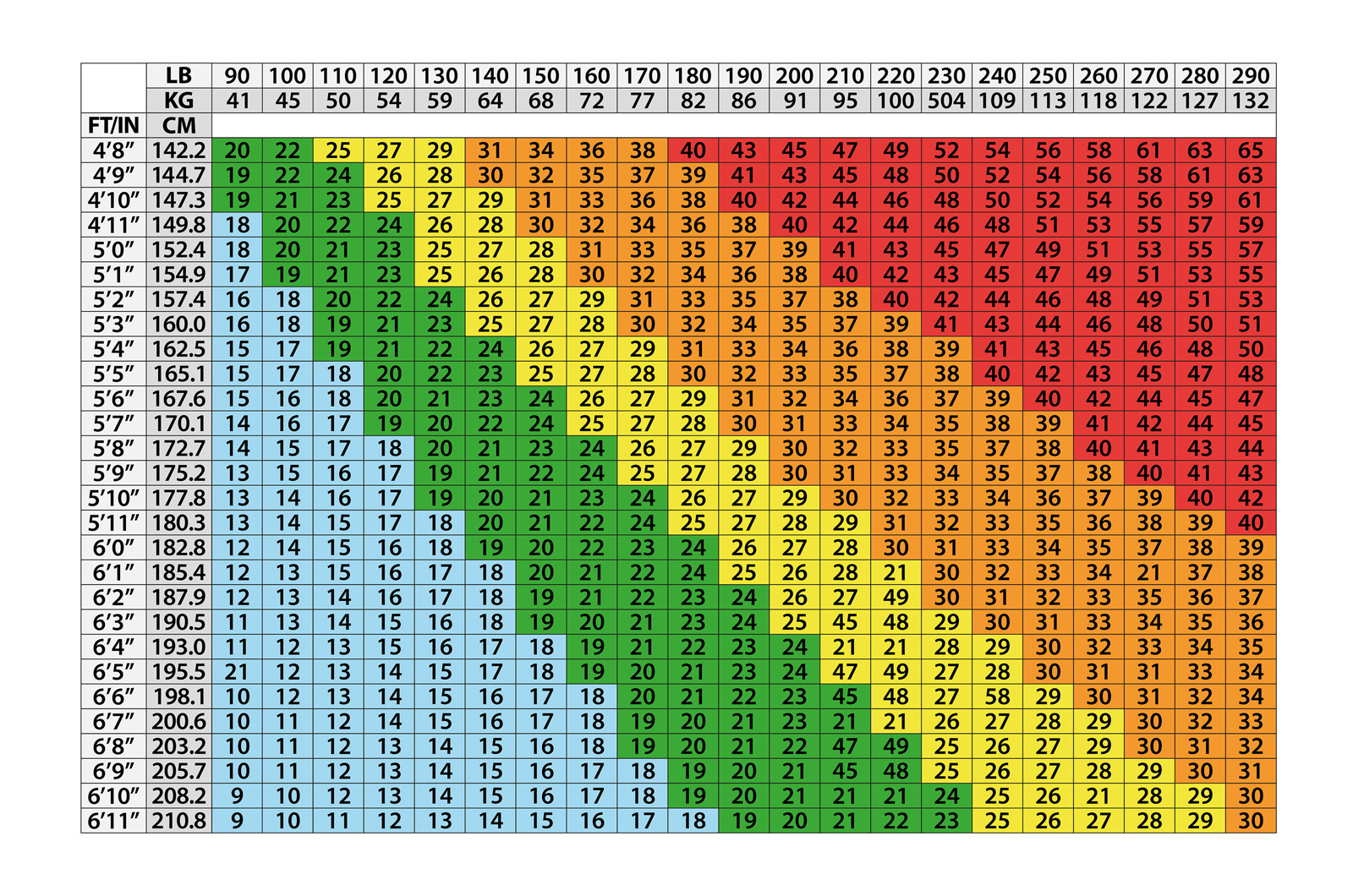What’s Normal Weight For A Woman And Why Is BMI Unreliable?
Please note: This BMI information only applies to adults.
What is a normal woman’s weight? I’m a five-foot-seven-inch-tall woman. At least I am if you round up to the nearest inch! And I’m “normal weight” for my height.
Don’t confuse normal weight with average weight for a 5’7 female. On average, American women over 20 years old weigh 170.6 pounds, have an average waist circumference of 38.6 inches, and stand almost 5 feet 4 inches tall.
Normal weight simply refers to my body mass index (BMI). It’s not an average weight, but an easy way to find your ideal weight range. A calculation based on weight and height. To find your Body Mass Index (BMI):
- divide weight in kilograms by height in meters.
- divide the answer again by height in meters.
Or use this BMI chart.


Normal just means I’m not underweight, overweight, or obese.
BMI has a lot of limitations and can be highly inaccurate, but it’s a quick and easy indicator of your ideal weight. You just need to be careful if you’re using it as a guide for weight loss.

What Is Normal Weight?
Normal weight, for a five-foot-seven-inch-tall woman, is in the range of 118 to 159 pounds.
Now that’s a huge range. It reflects different builds, and you’ll find some older BMI charts that refer to small frames, medium frames, and large frames.
Importance Of Being Normal Weight
The BMI score may be a rough and ready indicator, (and we’ll get to that in a moment), but maintaining a normal weight can be important. It’s not about looks or being “bikini ready”. Statistically, your weight is a reflection of your health.
If you’re overweight or obese, you could be playing Russian Roulette with your overall health. Medical conditions such as diabetes, heart disease, types of cancer, and strokes are all possible consequences of the health risk of being overweight.
That said, weight isn’t everything. Your life shouldn’t be dictated by the numbers on a scale. Aim for healthy eating but don’t beat yourself up on the days you reach for a donut.
Diet may be more important than exercise when it comes to your weight loss goals, but moving more is just as important for your health. Don’t neglect it! Plus muscles from exercising are an important part of maintaining your weight loss.
Find a sport you enjoy and get some exercise. Being fit and living a healthy lifestyle is about more than being a normal weight. All it takes is walking a few miles a day to stay fit.
Body Frame
Your body frame or build is reflected in your weight. That’s why the BMI range of a particular height is so large. I’m sure you’ve heard the claim that someone’s just a big build rather than overweight.
Sometimes it’s true.
The problem is that assessing someone’s frame adds yet another layer of inaccuracy. It’s based on your wrist size.
If you’re a 5-foot 7-inch tall woman, your frame can be estimated based on your wrist circumference:
- Less than 6.2 inches indicates a small frame,
- 6.2 to 6.5 inches indicates a medium frame,
- Over 6.5 inches indicates a large frame.
Based on this measurement I have a small frame. Maybe I have, but I also have a really broad back. It seems odd to me that body frame can be based purely on your wrist size.
The BMI calculation is vague enough without trying to account for frame size.
Gender – Man vs Woman
The BMI calculation doesn’t reflect the differences in gender. Men and women have different body shapes, and body fat percentages, and men, because of testosterone levels, tend to be more muscular.
These all have huge implications for your weight. Failing to differentiate for gender limits the effectiveness of BMI.

Muscle Weight
Muscles are denser than fat. That means a pound of muscle takes up less volume than a pound of fat. But the difference is a lot less than you might think.
People with big muscles and high muscle mass just look better than those carrying the same weight of body fat. On average, the density of fat is 0.9 g/mL, while the density of muscle is 1.1 g/mL. So not much difference.
BMI calculations are based on averages for the population. It’s not a good indication of your ideal body weight. The BMI weight chart doesn’t account for athletes who carry the extra bulk of muscles.
If you’re trying to lose weight and your weight loss is slow, it could be because you don’t need to lose weight.
It’s quite normal to find muscular athletes with low body fat but with a high BMI indicating they are overweight or even obese. You can be obese based on your BMI calculation and still be anorexic.
Athletes with big muscles such as bodybuilders may need to be cautious. There’s just insufficient information about the relationship between heart health and muscle weight.
Don’t Get Hung Up On Your Normal Weight
Let’s get a bit of perspective here. A lineup of 5-foot-7-inch-tall healthy women will give you all different shapes and sizes.
There is no such thing as normal. Normal weight is really just an average indicator across a population.
Of course, it would be wrong to deny weight gain has an impact on the health of a nation. Since the 1960’s the average American woman has gained less than an inch in height but 30 pounds in weight.
In the same timeframe, diabetes in the United States has increased rapidly. Almost 30% of the US population over 65 now has diabetes. It’s not surprising some of this increase is attributed to weight gain.
But for a lot of people, constantly focusing on weight, calorie intake, and dieting leads to a life of misery. It’s better to foster a healthy relationship with food, eat better rather than less, and move more.
Being fit will help you feel better about your body. It’s a better route to being healthy.
Why BMI Is Bogus
BMI was a formula dreamt up in the 19th century by a Belgian named Lambert Adolphe Jacques Quetelet. He was a mathematician who created the BMI formula to model the level of obesity in the general population.
It was never intended to be used for individuals. While a person who is overweight or obese will have a high BMI, the reverse isn’t true. You can have a high BMI but not be overweight or obese.
There are far more reliable ways to measure body fat, such as hydrostatic weighing or pod bods. Even inexpensive methods to measure your body fat at home, such as using skinfold calipers, can be more reliable than using BMI.
The only reason medical professionals seem to use BMI is that it’s such a cheap and quick figure to calculate. It’s never taken into account fit and healthy athletes with extra muscle weight.
By all means, check your BMI and find out your normal weight. But if the results aren’t what you expect, look for other methods to calculate your body fat percentage.
A healthy body fat percentage is age-related mainly because people typically gain weight as they get older. For women, the healthy range is 14 to 31% and 8 to 25% for men.







